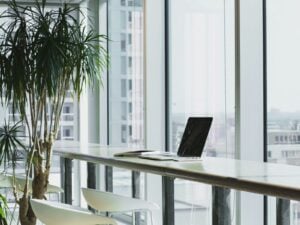
The nature of teaching in Japan is that you’ll teach each class just once a week, and sometimes less frequently than that. By the time your next class rolls around most students will have forgotten what you did last time. This is not great for remembering the content, but it is great for lesson planning. There is no need to reinvent the wheel each time you teach- just stick to a lesson format that works for you, and recycle the same games and activities that have worked for you in the past.
From my experience working in preschools, elementary schools, junior high schools, and language schools, here are 10 of the best games that you should use over and over (and over) again.

TrashBall
Let’s start things off with a game that is guaranteed to get students pumped. I like to call this one “TrashBall”. It’s unbelievably easy to set up and can honestly be used for any topic, grammar, or vocabulary.
You need scraps of paper and a box, that’s literally all.
Put the box on a desk at the front of the class, and hand each student a scrap of paper, and you’re ready to play. Ask the students a question and they have to write down the answer on their scrap of paper. Once they’ve written the answer, they have to run to you, you check the answer, and then the students scrunch up their paper into a ball and try to throw it into the box. They get a point if they sink the shot, but no points if they miss. Once they’ve thrown the paper, they have to go and pick it up, unscrunch it, and head back to their desk to wait for the next question.
That’s the whole game. You can make it spicier by adding time limits to each question, only allowing the first 10 students to take a shot with their trashballs, making it boys Vs. girls, or putting some tape on the ground- if the students shoot from the tape closest to the box, they get 1 point, further away is 5 points, and from the other side of the room is 20 points. If your students are too rowdy and this game gets too loud, then I like to add a new rule- If they talk, the other team gets a point. Instant silence is guaranteed.
Sit Down
I tend to use this game for younger students, but it can work for pretty much any large group to review spelling, numbers, days, months, or just about any question. Have all the students stand in a large circle. Stand inside the circle and in front of the first student. If you want to review months of the year, for example, get the first student to say January, then the next has to say February, next March, and so on. If a student makes a mistake or hesitates for too long (you can be the judge of how long is too long), they have to sit down.
Continue around the circle, making the hesitation time shorter and shorter until only one student remains. They are the champion. Use this style for days of the week, months of the year, and numbers. You can also ask each student a unique question like “When is your birthday?”, “Do you like playing tennis?”, or “Where is the library?”. You could even just choose a category, like “verbs, or actions” and have the students reel off the words they know until there’s only one left standing. Simple, no set-up, and fun.

Board games
Next, let’s get the students to stretch their creative muscles. Bring sheets of A3 paper, colored pens, and some dice to the classroom and have the students make their very own board games. ‘Race to the finish line’, ‘Snakes & Ladders’, ‘The Game of Life’, ‘Monopoly’- you can get the students to make a variant of any game that you like. If we take the most basic, a race to the finish line, as an example: In each space, students have to write a question based on the grammar they’ve just learnt. For example, “Is there a cinema in our school?”, “Will it be sunny tomorrow?”, or “Do you like watching YouTube?” Also, encourage them to spice things up a bit by adding spaces for “Miss a Turn”, “Roll Again”, “Go Back 1 space”, etc. To play the game, students use their erasers as tokens, roll the dice, move around the board, and answer any questions that they land on. For added studying, and to make sure other students are paying attention when it’s not their turn, offer a bonus 1-space forward for the student who can correctly repeat the previous student’s answer.
Criss-Cross
Have all the students stand up, and raise their hands to answer your question. If they get the question correct, they can choose either a ‘line’, ‘row’, or ‘only me’. Whichever they choose, all the students in that line or row can sit down. Then when the next student raises their hand to answer a question, they again choose line, row, or only me. However, if they choose a line or row, and any of the students who are in that line or row are already sitting down, they must now stand up. Repeat until all students are seated, or until you get bored.
MadLibs
Now, after the simplest game in the list, let’s look at perhaps the most difficult- ‘MadLibs’. In a lot of my classes, students often lack the creativity to write anything remotely interesting or funny. They get too bogged down in focusing on the right grammar and often stick to the same sentence patterns every time. To counteract this, I share with them a standard, boring story. Then I show how by changing just a few words, they can make it actually funny and enjoyable to read!
For example, I start off with really basic examples like: Hello. My name is James and I am an English teacher. Then I’ll show them that changing just one or two words makes it funnier: Hello. My name is James and I am a little baby. [PHOTO 2B] (Of course, having pictures helps…) I then share with the students three stories, and the words that I want them to change. The students work in pairs or groups to make the funniest or wackiest stories that they can. They then present it to the class, accompanied by a slideshow of funny pictures.
The Writing Relay
While we’re on the topic of writing, here’s another fast and fun game I call “The Writing Relay”. Once you’ve explained the target grammar, split the class into teams and split the board into that same number. The goal is for the students to write a correct sentence on the board, using that grammar, and one keyword that you will show them. But of course, it’s a race! So, give a pen, or piece of chalk, to the first member of each team, then reveal the first keyword (I like to do this by putting that word on the wall at the back of the room).
The student with the chalk has to write a sentence on the board, and then quickly pass the chalk on to the next student in their team. That student will look at the back of the room to see the next keyword, write their sentence, and the relay continues until you run out of words (I like to do at least 2 per student). When all the words are finished, or time runs out, you check all of the answers. Be super strict here! If there is a spelling mistake, zero points. Missing some punctuation? Zero points. The handwriting is unclear? Zero points. It’s a good, versatile game.
The Memory Game
Let’s jump now to a speaking game. “The Memory Game” is another really simple, no-prep game that can be used for any topic or grammar point. For example, if you are studying the past tense, have each student think about what they did yesterday. Then, have the students form teams (small teams for an easy game, large teams for a difficult one). The first member of the team says what they did yesterday (“I played tennis”). The next team member has to say what the first team member did (“He played tennis”), followed by their own answers (“I watched TV”). Now, the third student has to say the answer of the first student (“He played tennis”), the second student (“She watched TV”), and their own answer (“I read a book”).
This continues until the final team member has to say everyone’s answers before their own. Make sure only the student giving the answer is allowed to speak at any one time. The other team members can use gestures to give hints if needed. If you want to up the challenge, don’t allow the students to use the same verb. So if the first person says “I played tennis”, ‘played’ can no longer be used as an answer for anyone else. You can also make it a race, where 2 or more teams compete to see which team can memorize and say the whole list of answers first. To add just that extra, extra bit of challenge, you can join the team at the very end, and because you weren’t memorizing everyone’s answers, the team must collectively make gestures to enable you to guess the right answers.
The not Gambling Game
This game may, or may not, be OK for some of your classes because it technically involves gambling. Only gambling points, but in Japan, they don’t really like you to ‘encourage’ gambling in the classroom. Gather the students into teams, give them a whiteboard or sheet of paper, and assign them a number of starting points (I actually like to give the students a fat stack of fake cash- it gets them more excited when they physically win or lose something tangible).
Explain that for each question you ask, they have 1 minute to discuss in their groups and write their answer. Then, they have to decide how much to bet on their answer being correct. If they’re not so confident, suggest they bet 5 points. If they’re sure of themselves, let them go up to 20. If they get the question right, they collect on their bet. If it’s wrong, you take away points.
Ways I like to make it more interesting include:
- make sure to write all the teams’ answers and bets on the board, to ensure they pay attention when the other groups are speaking.
- don’t allow them to collect on their bet if there is even a slight mistake in their work (misspelled words, missing punctuation, lack of capital letters, etc.).
- make some of the questions deliberately obnoxious or impossible (I like to ask them questions like “What did I eat for breakfast?, or “Where do I want to go for the summer vacation?”).
I also use these questions if there is a team falling far behind, and just pretend they guessed the correct answer. Another thing I like to do is give misleading hints. Such as, if I ask them “What is my favorite movie?” I’ll start humming the theme tune for a different movie. Things like that.
Card Games
Previously, I mentioned that you should have the students make their own simple board games. Well, you should also have the students make their own simple card games! A good one for students to make themselves is “Apples to Apples”. Basically, have the students write down as many adjectives as they can on separate pieces of card or paper- these are the ‘Green Apples’. Next, depending on the level of the students, have them write cards that may match with the adjectives they have just written- these are the ‘Red Apples’.
For lower-level students, single words are fine (animals, foods, sports, places, etc.). For higher-level students, have them write down situations or at least full sentences (“playing basketball in the park”, “eating octopus balls for school lunch”, etc.). Then, when there is a nice stack of cards, it’s time to play. First, choose one player to be the judge for the first round. Shuffle the two piles of cards separately, then deal each student 7 “Red Apples”. Turn over one of the “Green Apple” adjective cards and all the students have to choose one of the 7 cards in their hands that they think best match the adjective. So, if the adjective is “cute”- you could choose a card like “baby”, or “cat”, or “my big toe”. It’s then up to the judge to choose the most suitable matching answer. The student who played the winning card gets one point. Rotate to the next judge, make sure each player has 7 cards, and go again. To make it more riotous, encourage debate and appeals to the judge- “No seriously, my big toe is so cute, take a look…!”
The Maze Game
This game can be as big as you want it to be, from a tiny square of paper all the way up to a huge sports field. This is “The Maze Game”. Once you’ve introduced your students to the concept of directions: anything from the simple left and right, up to “Take the 3rd left turn after the traffic lights”, you should get them to practice giving directions to each other- blindfolded, or course.
Start off nice and easy: have the students make pairs, blindfold one of them, and have the non-blindfolded student help them trace a route through a paper quiz. The only two rules are: 1) Only English allowed, and 2) No contact. Alternate which student wears the blindfold, and slowly raise the stakes. Make the maze walls tighter, make the walls rounded, or make it fiendishly difficult. Once you’re done with the pen and paper, send all the students into the corridor and move the desks around the classroom to make a maze. Again, blindfold some of the students, put them in different starting spots, and their partners (or teammates) have to help them reach their goal with the same rules: English only, and no contact. If you won’t get into too much trouble, I like to blast loud music at the same time, so the students really have to shout to be heard. To take things to the extreme, I once took the students to the school gym, laid out benches, cones, football goals, and other barriers, and had the students compete to guide their teammates toward the goal area. Stick to these games, rotate them, and you’ll be set for a year of fun English classes.













